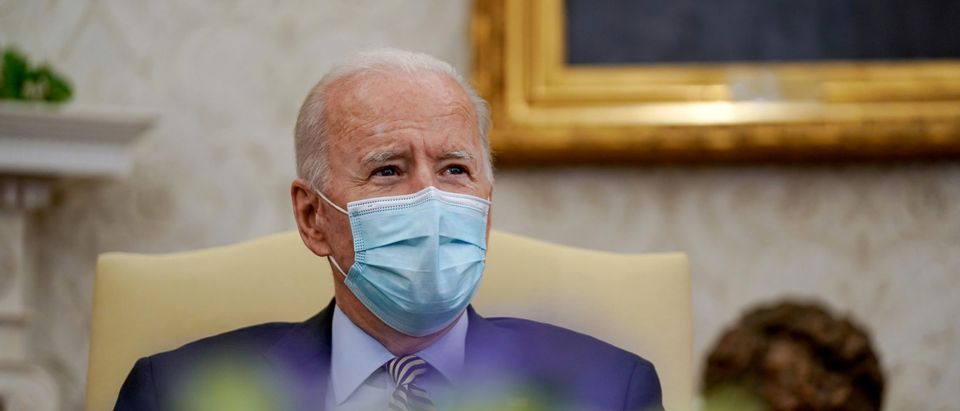President Joe Biden sent his $1.5 trillion discretionary budget request for the 2022 fiscal year to Congress on Friday, funding that would go towards non-defense programs and national defense.
Biden’s budget request calls upon Congress to provide $769 billion towards non-defense programs such as the Department of Education, Department of Energy (DOE), and Department of Housing and Urban Development (HUD). It also requests that Congress provides a budget of $753 billion for defense spending, an increase which includes $715 billion for the Department of Defense (DOD).
Additionally, Biden’s budget request calls for $8.7 billion to go towards the Centers for Disease Control and Prevention (CDC), the largest budget increase for the CDC in roughly two decades.
President Biden asks Congress for a 16% increase in non-defense federal spending https://t.co/BjEfvdkuq7
— CNN Politics (@CNNPolitics) April 10, 2021
The non-defense budget includes:
- $2.1 billion to address gun violence, an increase of $232 million.
- $36.5 billion in Title I grants for “high-poverty” schools, a $20 billion increase from 2021.
- $815 million towards “climate resilience and disaster planning.”
- $550 million in order to fix abandoned wells and mine, which will the administration claims will create 250,000 jobs.
- $3.6 billion to go towards fixing “community water systems, schools, and households.”
- A “contribution” of $1.2 billion to the “Green Climate Fund” in order to “help developing countries reduce emissions and adapt to climate change.”
- $900 million to help tribal communities address “poor housing conditions.”
- $715 billion for the DOD.
- $46.1 billion for the DOE, of which $1.9 billion is invested towards the “Building Clean Energy Projects and Workforce Initiative with a goal of “achieving carbon pollution free electricity by 2035.”
- $131.7 billion for the Department of Health and Human Services (HHS).
- $340 million towards “family planning healthcare services.”
- $52.0 billion for the Department of Homeland Security (DHS).
- $68.7 billion for Department of Housing and Urban Development (HUD).
- $17.4 billion for the Department of the Interior (DOI).
- $35.2 billion for the Department of Justice (DOJ).
- $14.2 billion for the Department of Labor (DOL).
- $63.5 billion for the Department of State and “other international programs.”
- $852 million for the Small Business Administration (SBA) in order to invest in “underserved entrepreneurs,” and “expand procurement opportunities.”
- $4.3 billion to go towards the Office of Refugee Resettlement (ORR).
- $891 million to “address the nearly 1.3 million outstanding cases before the immigration courts.”
The budget for non-defense programs accounts for a 16% increase in government spending, while the Pentagon’s budget accounts for a 1.7% increase. (RELATED: Friday Evening Dispatch: Biden On A Spending Spree)
While still a slight increase in funding towards national security, the budget request for the Pentagon is still less than former President Donald Trump’s predicted budget request of $722 billion.
“The discretionary request prioritizes the need to counter the threat from China as the Department’s top challenge,” the request says. “The Department would also seek to deter destabilizing behavior by Russia.”
The budget request comes as a recent report shows that the Department of HHS is reportedly spending about $60 million per week in order to house migrant children and teens who have crossed the southern border of the United States.



